Shivalinga Mudra: Benefits, Meaning and Steps to Perform
Shivalinga Mudra is a powerful hand gesture in yoga named after the sacred symbol of Lord Shiva. It helps to channelize inner energy and enhance concentration. This mudra hand gesture resembles the Shivalinga, a symbolic representation of Lord Shiva...
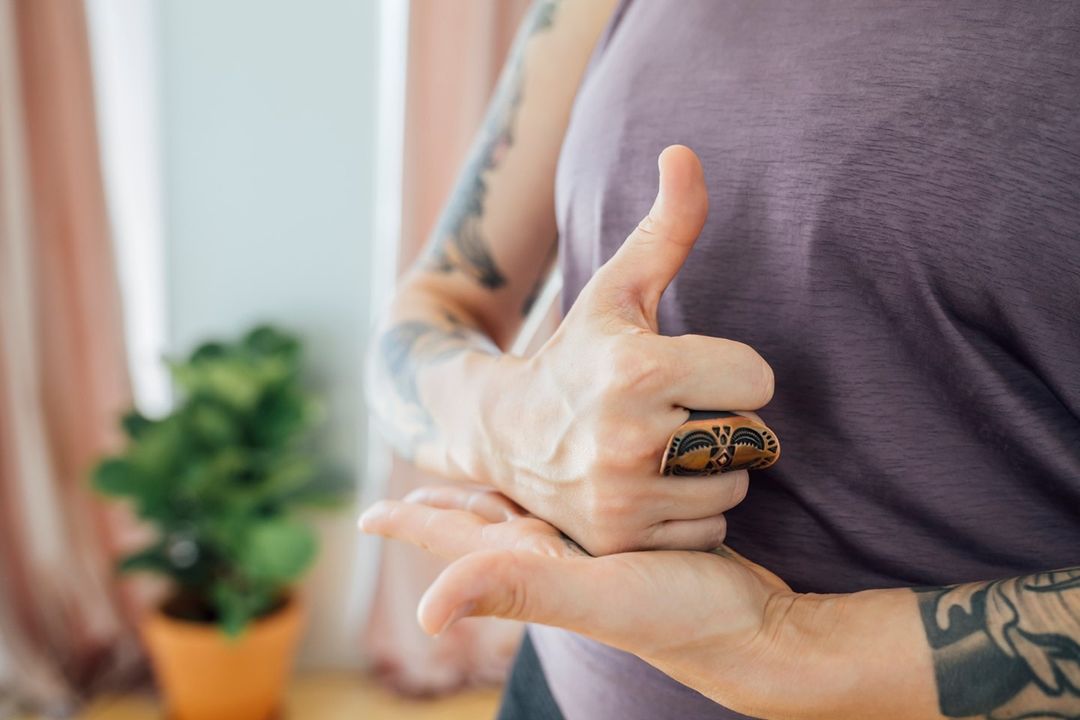
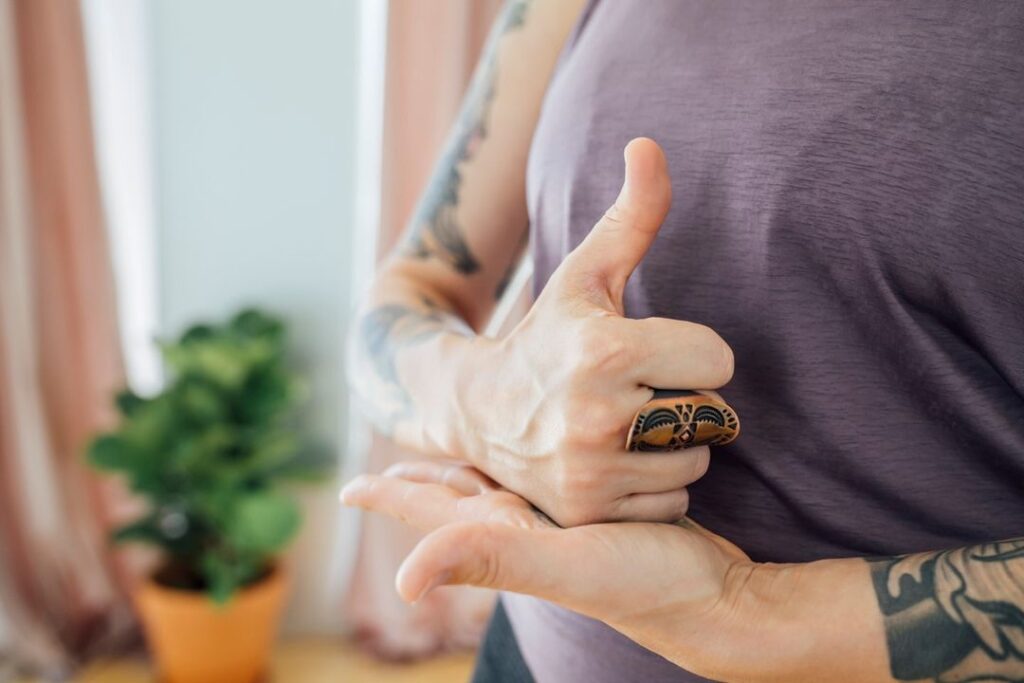 Shiva Linga Mudra hand gesture. Image: mindfulish_@instagram
Shiva Linga Mudra hand gesture. Image: mindfulish_@instagramShivalinga Mudra is a powerful hand gesture in yoga named after the sacred symbol of Lord Shiva. It helps to channelize inner energy and enhance concentration.
This mudra hand gesture resembles the Shivalinga, a symbolic representation of Lord Shiva in Hinduism. The hand gesture shows combining the elements of masculinity and femininity, creation and destruction, stillness and dynamism. In this Mudra, the hands come together to form a shape reminiscent of the Shivalinga, creating a sense of balance and unity within.
Mudras are an integral part of yoga and meditation, serving as gestures that lock and guide energy flow in the body. By curling, crossing, stretching, and touching the fingers and hands, we can “talk” to the body and mind as each area of the hand corresponds to a certain part of our being.
In this article, we will delve into the specifics of Shivalinga Mudra, guiding you through the steps to perform it correctly, exploring its benefits, and addressing common questions related to its practice.
What is Shivalinga Mudra?
Shivalinga Mudra takes inspiration from the powerful symbol Lord Shiva. In this Mudra, the hands are positioned to mimic the shape of the Shivalinga, creating a tangible focus for meditation and energy channeling. The right hand, forming a fist with the thumb raised, represents the masculine energy or the ‘Linga.’ The left hand, open and cup-shaped beneath the right, symbolizes the feminine energy or the ‘Yoni.’ Together, they create a balance, reflecting the duality and unity of existence.
The mudra draws from the symbolism of Shiva and Shakti, the primal forces of the universe, and has been practiced for centuries as a means to attain spiritual balance and enhance meditation.
Shivalinga Mudra and Linga Mudra are distinct hand gestures in yoga, each with unique benefits and purposes.
Shivalinga Mudra is performed by placing the left hand open and cup-shaped in the lap, with the right hand forming a fist, resting on the left palm, and the thumb extended upwards. This gesture represents the Shivalinga, symbolizing the balance of masculine and feminine energies.
On the other hand, Linga Mudra is executed by interlocking the fingers of both hands while keeping the left thumb erect, pointing upwards, and encircling it with the thumb and index finger of the right hand. This Mudra generates heat in the body, helping to boost immunity and aid in weight loss.
The Real Meaning of Shiva’s Linga Symbol
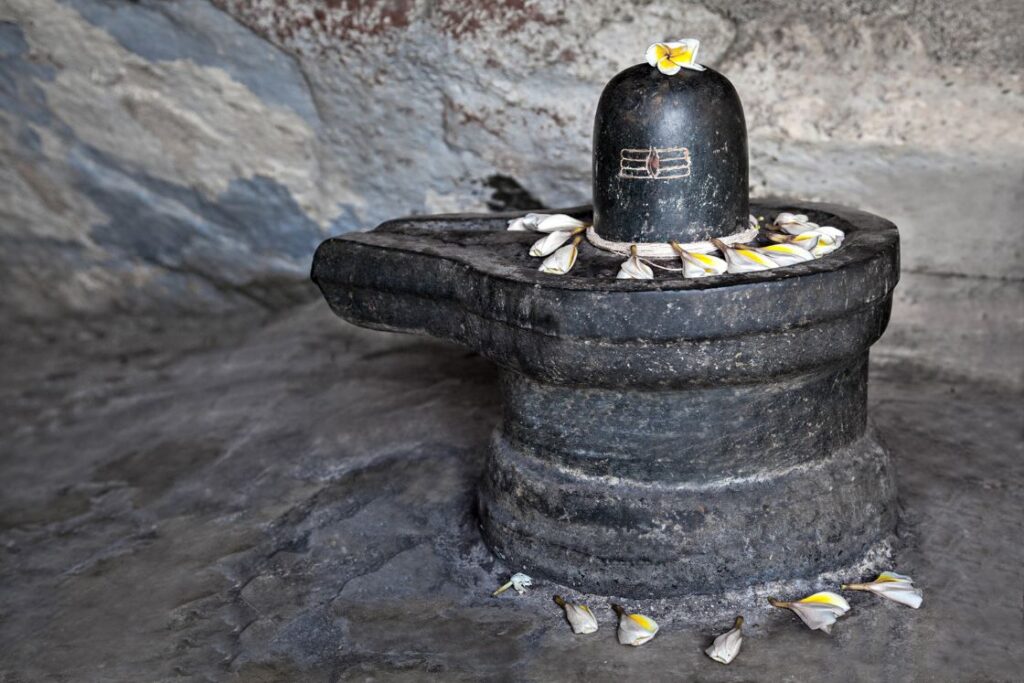 Traditional Shiva Linga. Image: Canva
Traditional Shiva Linga. Image: CanvaThe Shivalinga is a significant symbol in Hinduism, representing Lord Shiva. It is a cylindrical structure set on a circular base, symbolizing the union of the divine masculine and feminine energies, creating a harmonious balance in the universe. The Shivalinga is not just a religious symbol but also a representation of cosmic energy and the process of creation and destruction.
The cylindrical shape of the Linga is interpreted as the ‘endless pillar’ of light, representing Shiva’s nature as infinite and boundless. The circular base, or the ‘Yoni,’ represents Shakti, the feminine principle, and is symbolic of the womb, the source of all creation. Together, they depict the cycle of creation, preservation, and dissolution, the very rhythm of the cosmos.
The Hand Gesture and its Significance
The specific hand gesture in Shivalinga Mudra is crucial for its effectiveness. The raised thumb of the right hand symbolizes the fire element, encouraging vitality and assertiveness. The cup-shaped left hand represents the water element, promoting calmness and receptivity. This combination helps in balancing the opposing energies within, leading to a state of equilibrium and inner peace.
How to Perform Shivalinga Mudra
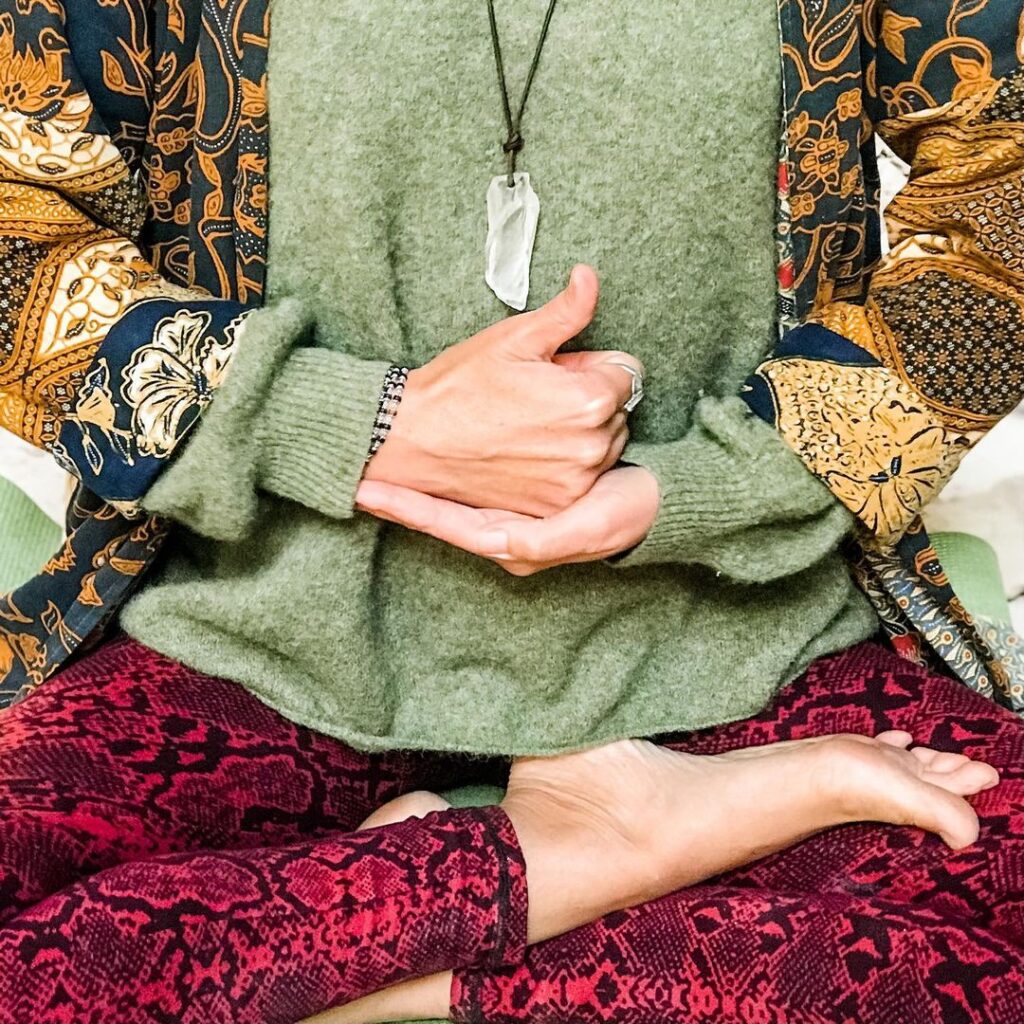 𝗦𝗵𝗶𝘃𝗮 𝗟𝗶𝗻𝗴𝗮 𝗠𝘂𝗱𝗿𝗮 – 𝗳𝗼𝗿 𝗲𝗻𝗲𝗿𝗴𝘆 & 𝘁𝗿𝗮𝗻𝘀𝗳𝗼𝗿𝗺𝗮𝘁𝗶𝗼𝗻. Image: kundaliniyogaschool@instagram
𝗦𝗵𝗶𝘃𝗮 𝗟𝗶𝗻𝗴𝗮 𝗠𝘂𝗱𝗿𝗮 – 𝗳𝗼𝗿 𝗲𝗻𝗲𝗿𝗴𝘆 & 𝘁𝗿𝗮𝗻𝘀𝗳𝗼𝗿𝗺𝗮𝘁𝗶𝗼𝗻. Image: kundaliniyogaschool@instagramThe Shivalinga Mudra is formed by combining the both hands; The right hand takes the form of a fist with the thumb extended upwards, symbolizing the Linga or the masculine energy. The left hand is kept open, cup-shaped, and placed beneath the right hand, representing the Yoni or the feminine energy. Together, they create a harmonious balance, embodying the duality and unity of existence.
Place the mudra hand at your Solar Plexus / Manipura Chakra. Take a few deep breaths connecting your breath with your navel. As you inhale allow the navel to come forward, as you exhale pull the navel in.
Follow these steps to do shivalinga mudra in meditation session;
Sit comfortably with your spine straight and shoulders relaxed. You can sit on a chair, cushion, or directly on the floor, whichever suits you best. Place your left hand open and cup-shaped in your lap. Make a fist with your right hand, extending the thumb upwards. Gently rest your right fist (with the thumb extended) on top of your left open hand. Ensure that the extended thumb is pointing upwards, and your hands are positioned at the level of your abdomen. Close your eyes and take deep, slow breaths. Focus on your breathing and feel the energy balance between your hands. Maintain your attention on the upward-pointing thumb, visualizing it as a channel for divine energy and balance. When you are ready to conclude your practice, gently release the mudra by releasing the fist. Take a moment to observe the effects of the mudra on your state of mind and energy.Recommended Sitting Positions
Shivalinga mudra while holding in meditation is suggested to perform in these sitting postures:
Sukhasana (Easy Pose): A simple cross-legged position that helps in maintaining a straight spine. Padmasana (Lotus Pose): This position provides stability and helps in maintaining an erect posture, enhancing the effects of the Mudra. Vajrasana (Diamond Pose): Sitting on your heels in kneeling position, this posture aids in digestion and is beneficial for those who find cross-legged positions uncomfortable.Time & Duration
The ideal time to practice Shivalinga Mudra is during the early morning hours between 4 am and 7 am. During this time the mind is calm and the environment is serene, which enhances the effectiveness of the Mudra. If morning practice is challenging, it can also be done in the evening.
The ideal duration for holding Shivalinga Mudra is 10 to 15 minutes in one time. You can choose to perform it two or three times a day. Consistent practice within this time frame helps in achieving a balanced state of mind and enhances focus and concentration. It is important to maintain a relaxed posture and focus on your breathing throughout the practice to reap the full benefits of the Mudra.
Affirmation
Shivalinga mudra can be accompanied by affirmations to enhance its benefits. Here’s an affirmation for Shiva Linga Mudra:
“I am in perfect balance, embracing both my masculine and feminine energies. I am grounded, strong, and connected to the universe. Through Shiva Linga Mudra, I channel the energy of Lord Shiva and Shakti, bringing harmony to my mind, body, and spirit. I release stress and anxiety, finding inner calm and confidence. I am the embodiment of unity and strength.”
By using affirmations like this, practitioners can amplify the positive effects of Shiva Linga Mudra and focus on achieving a sense of balance, strength, and tranquility in their practice.
Shivalinga Mudra Benefits
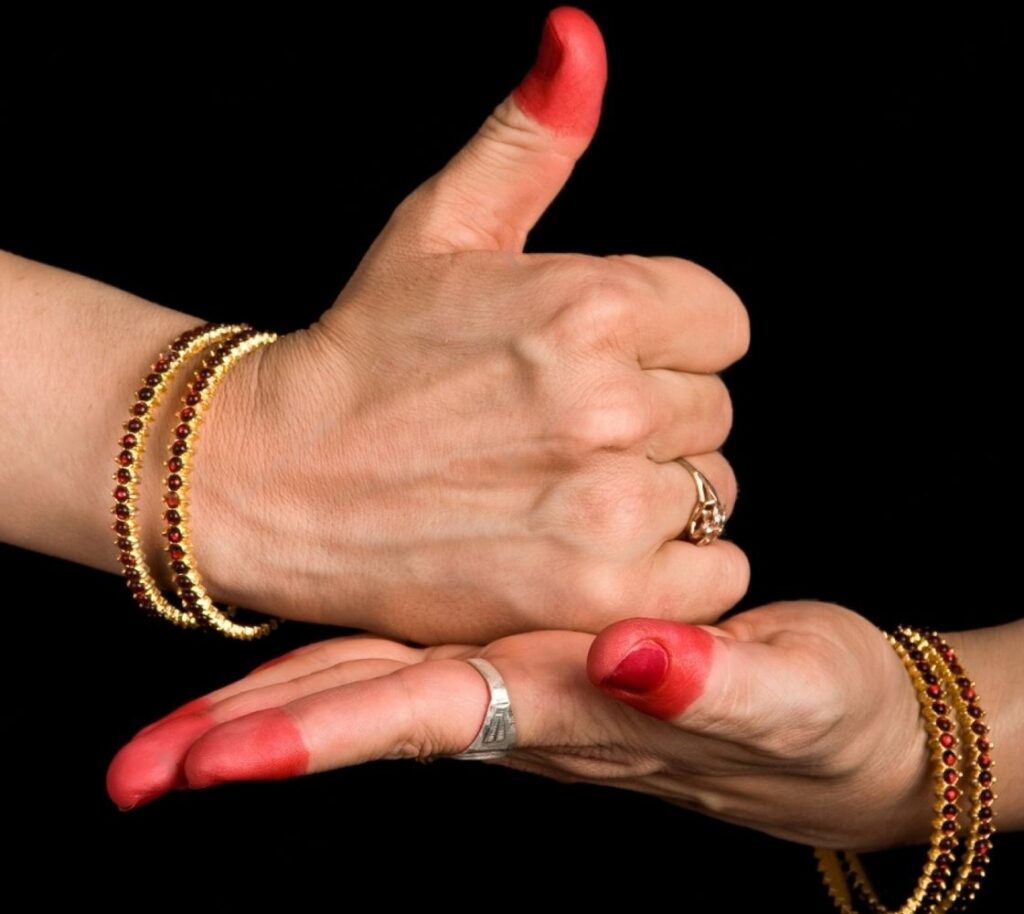
Shivalinga Mudra is renowned for its ability to alleviate stress, anxiety, and depression, fostering a sense of balance and equality within. It enhances the body’s energy, aiding in the combat against stressors and promoting a state of mental well-being. This Mudra is a powerful tool for those seeking inner peace and balance in their lives.
1. Balancing Pitta Dosha
Shiva Linga Mudra is associated with the generation of heat in the body. This heat can help balance excessive Pitta dosha, which is associated with fire and can cause issues like inflammation and excessive heat in the body. The Mudra’s ability to generate heat helps in regulating and balancing Pitta Dosha.
2. Balancing and Activating Root Chakra
Shiva Linga Mudra aids in activating and balancing the Root Chakra (Muladhara Chakra) by channeling energy into this foundational energy center. With its phallus-like thumb gesture associated with Lord Shiva, it promotes emotional and mental stability which is associated with root chakra. It alleviates stress and anxiety, and fosters a sense of grounding and security in one’s life.
3. Enhancing Breathing Capacity
Shivalinga Mudra’s ability to generate heat in the body can enhance breathing capacity and contribute to better lung function. Improved breath control is essential for overall health and vitality.
4. Relief from Sinusitis and Cold
Shivalinga mudra is beneficial for individuals dealing with cold, cough and sinusitis as it increases resistance to cold symptoms. By activating and balancing energy within the body, it supports the body’s natural defences against these conditions.
5. Removing Negativity
Shivalinga Mudra is often associated with the removal of negativity from one’s life. It promotes a sense of grounding and relaxation, making it effective in combating stress and nurturing mental calmness.
6. Spiritual Connection
Shivalinga Mudra symbolizes the integration of the energies of Lord Shiva and Shakti, fostering a spiritual connection and deeper spiritual awareness. This can bring a profound sense of inner peace and purpose.
Precautions & Contraindications
Shivalinga Mudra is generally considered safe for most individuals when practiced correctly. Here are some precautions and tips to ensure a safe and effective practice:
Listen to Your Body: Pay attention to your body’s signals. If you feel any discomfort or strain while practicing the Mudra, gently release the gesture and rest. Avoid Overstraining: Do not force your hands into the position. The practice should be comfortable and strain-free. Consult a Professional: If you have any existing health conditions or concerns, it is advisable to consult a yoga or healthcare professional before incorporating Shivalinga Mudra into your routine. Create a Calm Environment: Practice in a quiet and calm setting to enhance your focus and the effectiveness of the Mudra. Combine with Meditation: Incorporating Shivalinga Mudra into your meditation practice can deepen your meditation and enhance its benefits. Be Mindful: Maintain a state of mindfulness during the practice, keeping your attention on the Mudra and your breath.However, like any yoga practice, it is important to be aware of certain contraindications to ensure safety and prevent any adverse effects.
Here are some conditions in which Shivalinga Mudra should be avoided or practiced with caution:
High Blood Pressure: While Mudras are generally known to help in regulating blood pressure, individuals with high blood pressure should practice Shivalinga Mudra in moderation and under the guidance of a qualified instructor. Ulcer: If you have a stomach or duodenal ulcer, it’s best to refrain from practicing Shiva Linga Mudra, as the increase in heat within the body might exacerbate the condition. Bile Problems: Individuals with problems related to bile should avoid practicing Shiva Linga Mudra, as it can potentially aggravate these issues.Conclusion
Shivalinga Mudra is a powerful yoga mudra drawing inspiration from the sacred Shivalinga symbol, representing the harmonious union of masculine and feminine energies. This Mudra not only enhances mental focus and balance but also contributes significantly to one’s spiritual journey. It fosters a deep sense of inner peace and tranquility in practitioner.
FAQs Related to Shivalinga Mudra
Q1. What is the Meaning of Shivalinga Mudra?
Shivalinga Mudra is a yogic hand gesture that draws its inspiration from the Shivalinga, a symbolic representation of Lord Shiva in Hinduism. The Mudra embodies the union of masculine and feminine energies, creating a balance between the two.
Q2. What is the ideal time to practice Shivalinga Mudra?
The best time to practice Shivalinga Mudra is during the early morning hours, as the mind is calm and the environment is serene, enhancing the effectiveness of the Mudra. For optimal benefits, it is recommended to practice Shivalinga Mudra for 10 to 15 minutes in one sitting.
Q3. Are there any precautions to take while practicing Shivalinga Mudra?
Yes, individuals should practice Shivalinga Mudra with awareness, avoiding overstraining and paying attention to any discomfort. Those with existing health conditions should consult a professional before starting the practice.
Q4. Can Women Practice Shivalinga Mudra?
Yes, Shivalinga Mudra is suitable for both men and women. It is a universal practice aimed at balancing inner energies, enhancing focus, and promoting a sense of calmness, making it beneficial for individuals regardless of gender.

 JimMin
JimMin 

































